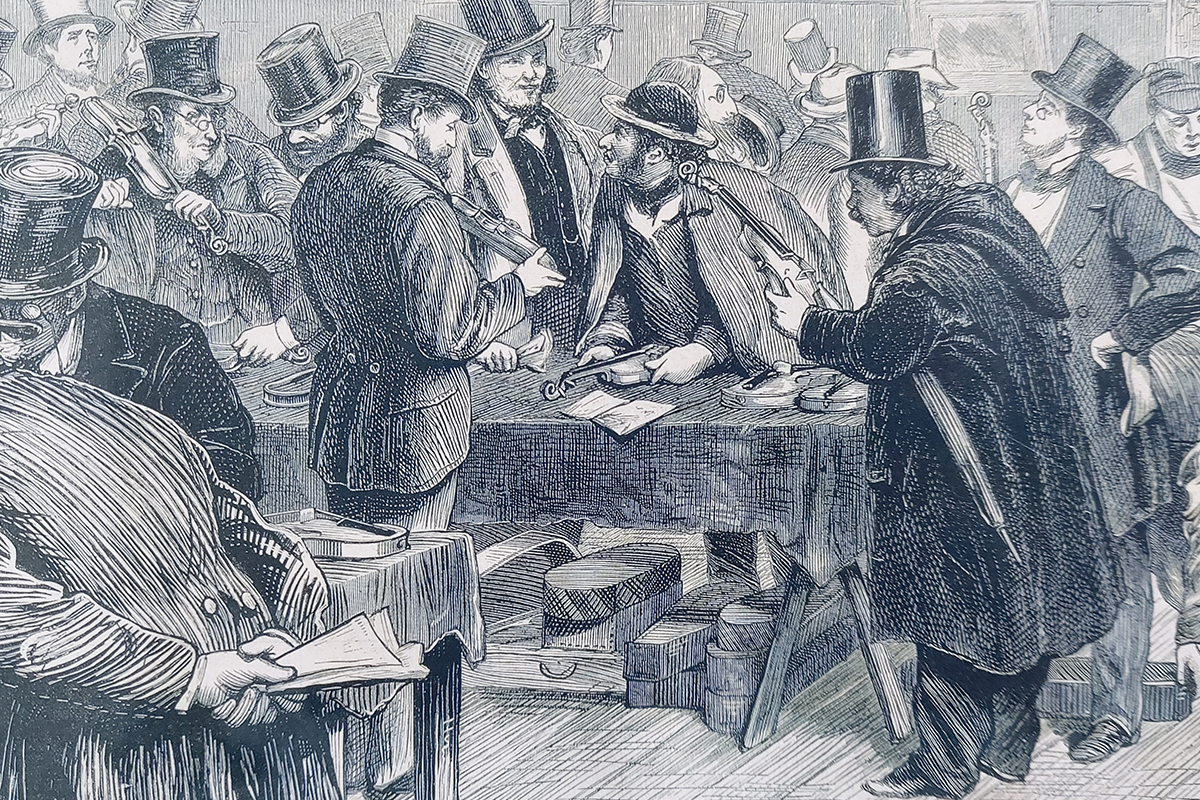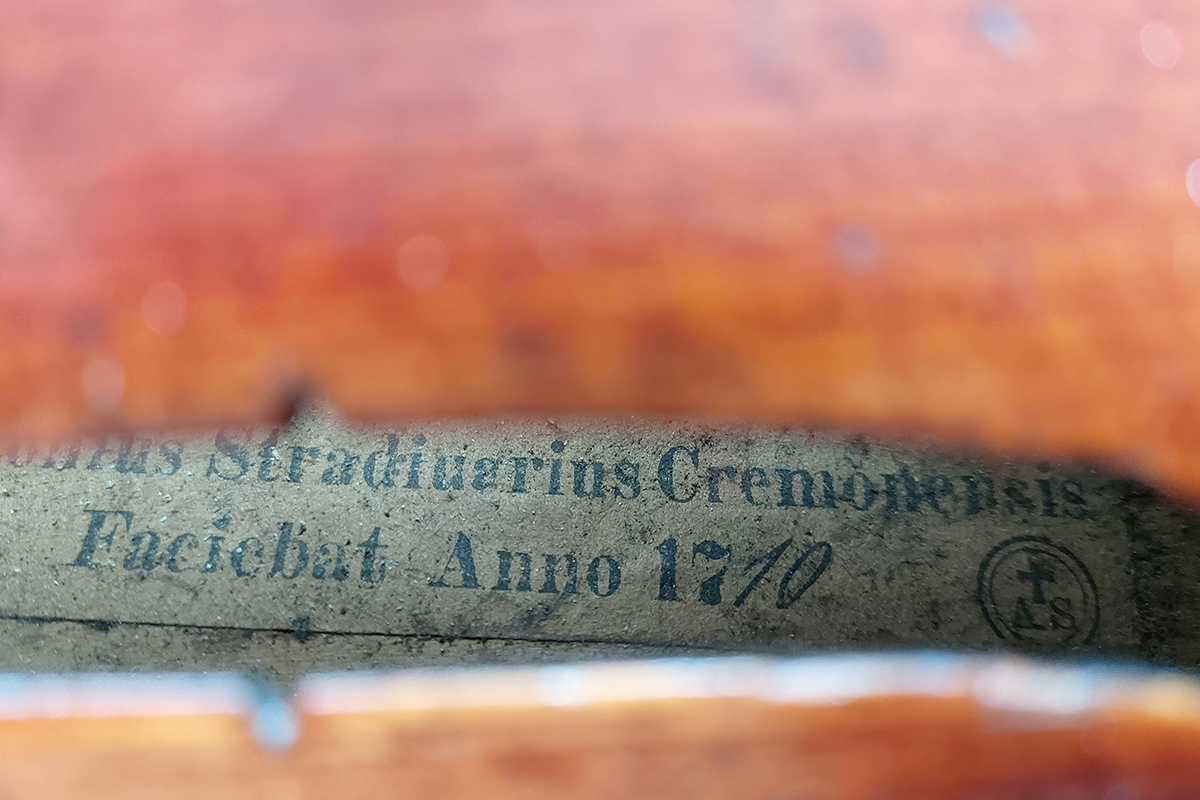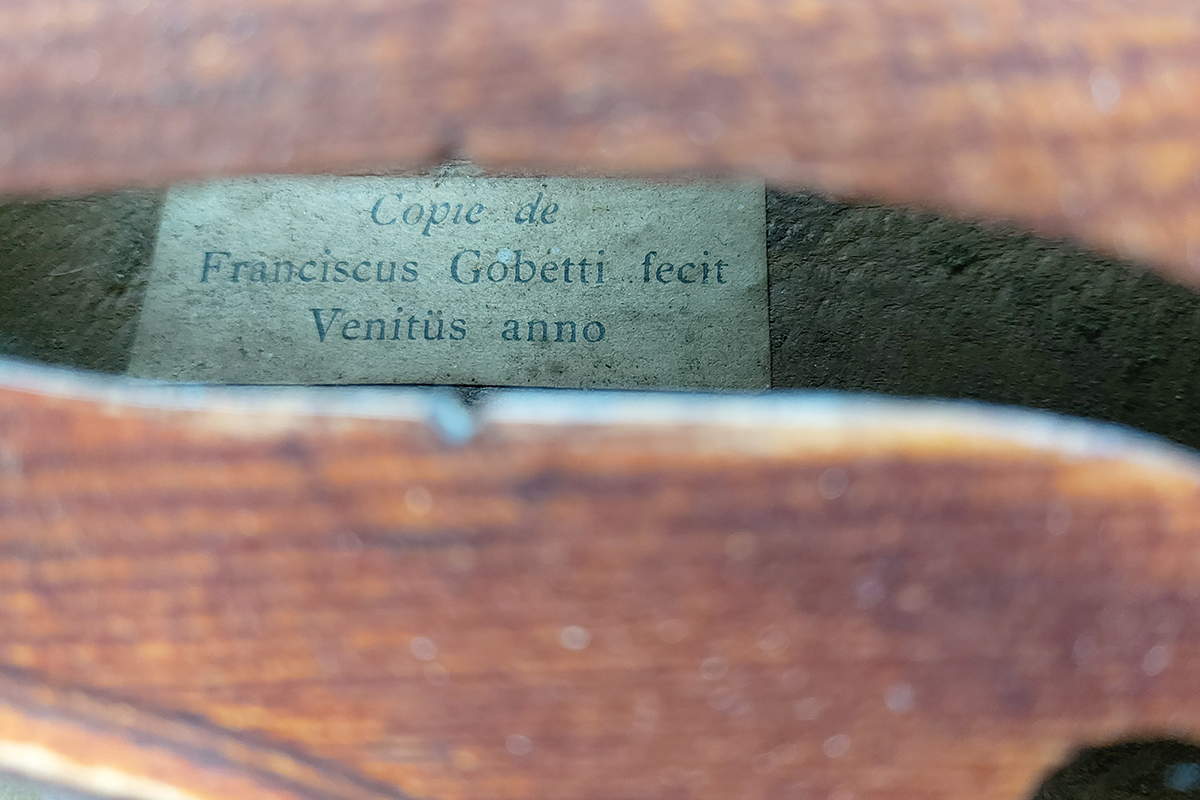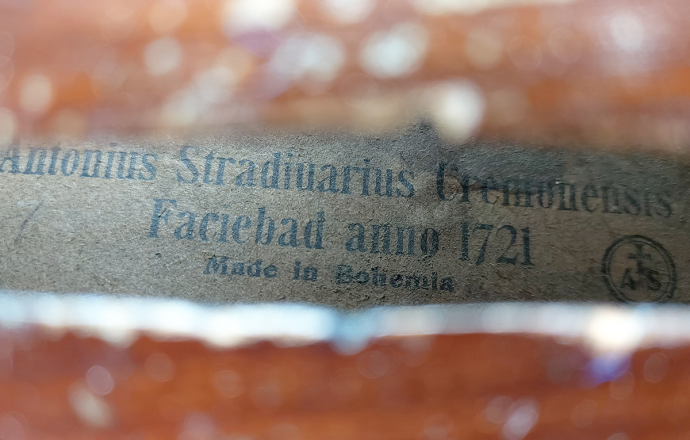I really do enjoy all aspects of my work, at the bench, chatting with clients, and also studying the instruments themselves. I feel incredibly lucky to restore instruments. (However, I know it wouldn’t appeal to everyone. Years ago chatting to a sheep farmer in a pub the ‘Farr Bay Inn’, in Bettyhill on the most northerly coast of Scotland, he declared to the entire gathering that he couldn’t think of a more tedious profession!).
Of course, chatting with clients is a part I embrace, getting to know players enables me to offer them a tailor-made service, and many over the years have become friends.
The other aspect is the instrument itself. Authenticating, dating, establishing how and when and ‘by who?’ this instrument came into existence. As part of the team who staged the extraordinary exhibition ‘The British Violin’ at the Royal Academy of Music in London, and subsequently producing the huge comprehensive volume to accompany it, took up a lot of my time.

Here the dealers in the 1870’s are all studying the instruments in detail, looking for ways to identify and authenticate the maker.
This was a world first, a celebration of English making, with the earliest instrument on display dating back to 1595. This event ignited in me a real passion for getting to the bottom of who made an instrument, when they made it, who did they make it for and whether the instrument is a copy from one of the greats.
The history of instruments is sometimes hard to uncover, often shrouded in mystery. Stories that have been passed down through generations of the family, or owners, are often half remembered, or added to or just turn into Chinese whispers over the years. Letters that have been kept as proof of authenticity, certificates purchased from violin shops or receipts kept from the original purchase are mostly original and authentic, but some are not! The label inside the instrument may be authentic or fake.

I occasionally receive phone calls completely out of the blue from excited individuals who have purchased a violin from an auction or a junk shop. They saw the label inside and read the words through the ‘f’ hole. Are they now the proud owner of a true Stradivari?
It’s almost heart-breaking to suggest they look again at the label, to guide them to the writing that says ‘Copie de…….’ trying very gently not to crush their dreams.

Some send me photos of the instrument and the label in the hope that the label is incorrect or a fake. (It saddens me too because just maybe, somewhere hidden in the depths of the Scottish borders there is an undiscovered gem of an instrument, in a loft or on top of a wardrobe in a dusty old case, just waiting to be discovered!!! If you find anything…….then come!).
So even if the label inside is clear and true, the only real way to authenticate any instrument is to look at it, to study to see the marks left by the makers hand, leaving us with clues as to how he held his tools.
We are looking for the ‘external signature’ that he will leave, not written, but a consistent method of working that we use to recognise his hand and his alone.
Over years of research, we have worked out many characteristics for so many makers. For example, we can even tell by the way a head is cut whether the maker was left or right-handed, and whether the light source was to his right or to his left.
We see by the brush marks in the varnish (like the great oil painters) who may have applied the varnish. Roughly applied implies that the work may have been executed by an apprentice or a younger less experienced member of the family. Finished to perfection means the master stepped in and completed the task in hand.
This fascinating world of violins, violas and cellos just keeps giving. I’m intrigued by its constant nudge into the next exciting discovery or adventure, whether it’s the next instrument that needs to sound or be authenticated, or both.
I believe I shall never tire from these instruments, their beauty, and the journey they take us on.


Leave a comment